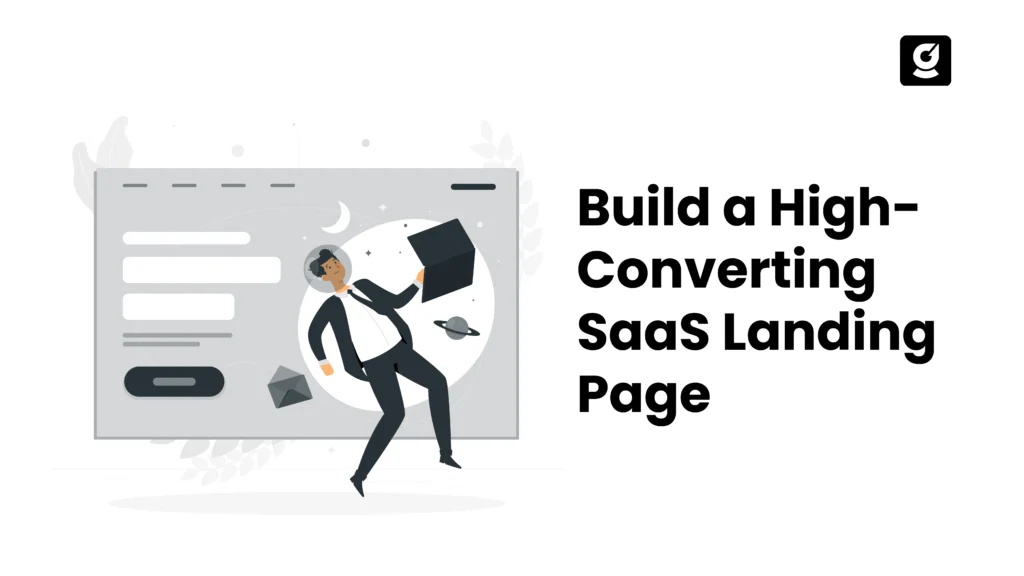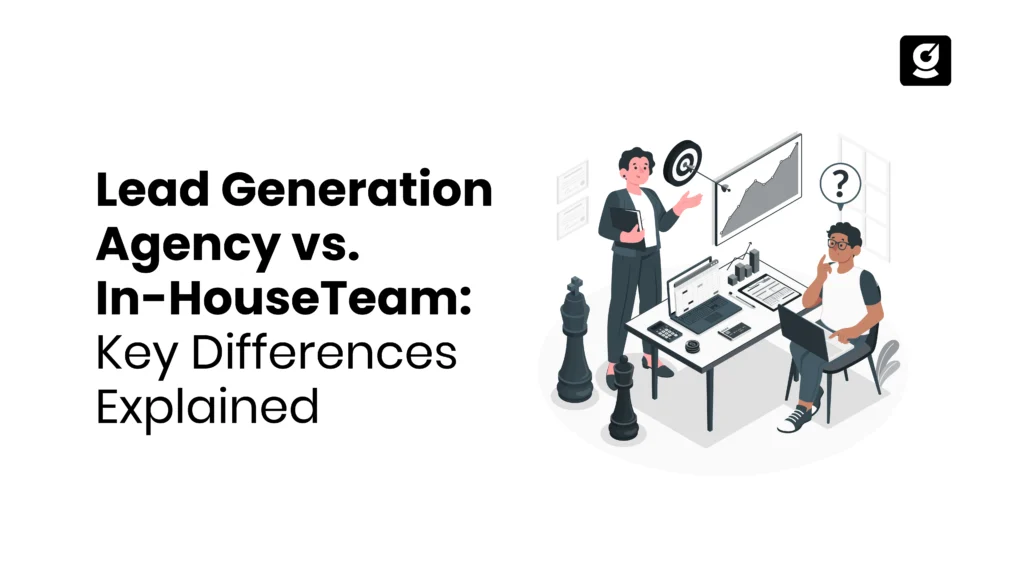Every business owner somehow struggles to choose between web flow and WordPress to build their website.
WordPress is a traditional open source platform that comes with plugins and themes. Webflow on the other hand is a SaaS platform where you can build a website that integrates development and design in one platform. WordPress and webflow are popular platforms for creating websites that have an advantage that is you don’t need an experienced developer or programmer to use them.
In this blog we can look into deep of their common differences as you can finally decide which one you can choose for your next website.
What is WordPress?
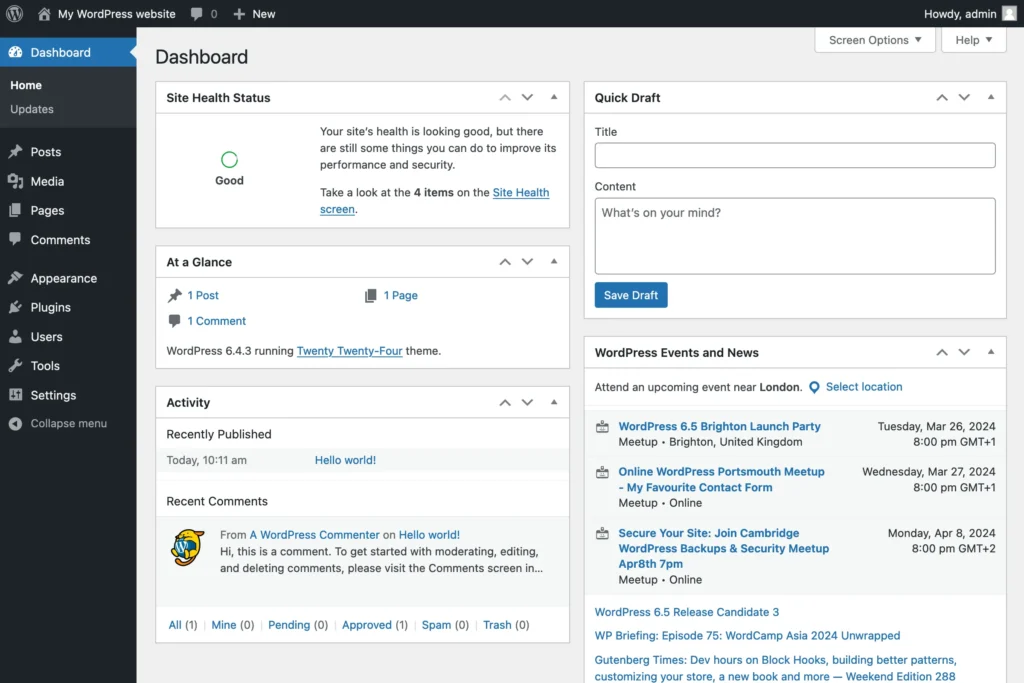
WordPress is a widely used Content Management System (CMS) that is the foundation for thousands of websites. It launched in 2003 as a blogging platform, and WordPress quickly evolved into the leading CMS. Over 42% of all the websites on the Internet help users create anything from simple blogs to complex e-commerce websites.
The main attraction of WordPress is its two types of extensions,
- Themes that help control the design of your website
- Plugins that help in adding new features to your website
Its open-source nature offers flexibility, allowing developers to modify and tailor the platform to meet specific needs. WordPress gives so many plugins and themes, providing users with countless options to enhance functionality and design without requiring extensive coding knowledge.
What is WebFlow?
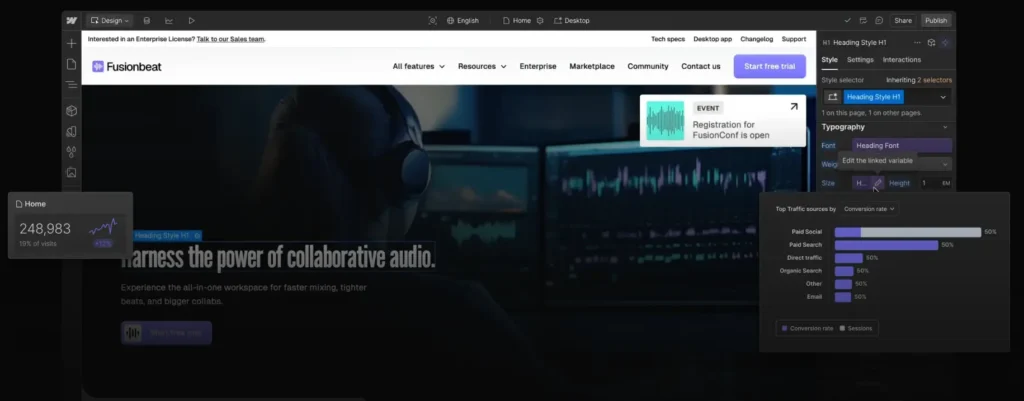
Webflow is a SaaS website CMS that prioritizes no-code, design-driven development. As an all-in-one Software-as-a-Service (SaaS) tool, it offers a unique approach to other traditional CMS platforms.
- Build dynamic, visually stunning websites without writing a single line of code.
- Create websites that look great on any device, with built-in responsive design options.
- It offers flexibility for fine-tuning your website’s appearance and functionality.
- Simplifies the process by combining website design and hosting under one platform.
Webflow’s seamless design experience and comprehensive features make it a favourite among creatives and businesses looking for an efficient web design solution.
WordPress Vs Webflow
1. Ease of Use
WordPress
WordPress is a powerful CMS, but it comes with a notable learning curve. While you can start with pre-designed themes and extend functionality through plugins, achieving a truly unique and professional website often requires a deep dive into coding.
WordPress has a more complex setup process, requiring you to go through these steps:
- Choosing the right hosting provider
- Selecting a domain registrar (if your host doesn’t handle this)
- Installing WordPress manually (unless provided by your host)
- Setting up a theme
- Adding and configuring plugins
Each of these steps demands a proper understanding, making the initial setup more challenging for beginners. However, WordPress is best for those willing to invest time into learning its ecosystem or for businesses that can hire developers to manage their websites.
WebFlow
Webflow, on the other hand, prioritizes simplicity and visual design. With its intuitive drag-and-drop builder, users can create custom layouts for your website without writing a single line of code.
Its setup and workflow are straightforward:
- There is no need for separate hosting or domain registration—it’s all built-in.
- Visual drag-and-drop editor eliminates the need for coding.
- Pre-designed templates make it easy to start building right away.
- Intuitive tools for adding animations, styling, and responsive designs.
This makes Webflow particularly attractive to creatives and entrepreneurs who want a high-quality site without relying on developers.
2. Customization And Design Capabilities
WordPress
WordPress is a famous platform for developers and businesses needing extensive customization. WordPress allows users to build entirely custom websites using their own themes or by modifying pre-designed ones. With access to the codebase, all developers can tweak every aspect of a site to meet precise requirements.
WordPress’s extensive plugin library adds powerful functionality, but it comes with potential downsides. Over-reliance on plugins for customization can lead to:
- Bloated websites that slow down performance.
- Compatibility issues between plugins, themes, and core updates.
- Increased maintenance efforts.
- Best for highly complex websites requiring advanced features or integration with custom systems.
WebFlow
Webflow redefines design customization by providing powerful built-in tools, eliminating the need for third-party plugins to achieve core functionality.
In webflow designers can create visually stunning, fully responsive websites directly within its editor. Every design element is customizable, allowing for precise control over spacing, typography, animations, and more. This makes it a favourite among creatives looking for an intuitive platform to translate their ideas into reality.
- Webflow doesn’t rely on plugins for key features like SEO, responsive design, or CMS management.
- SaaS businesses often require modern, visually appealing sites that convey innovation. Webflow’s design flexibility and no-code tools make it particularly suited for designing SaaS companies.
- Perfect for creatives, startups, and SaaS companies aiming to build unique, visually impressive sites quickly and efficiently.
3. Plugins & Extensions
WordPress
WordPress gives you access to a massive collection of plugins for your website. With nearly 59,000 free plugins and thousands of premium ones, you’ve got endless options to customize your site. From SEO tools to contact forms, there’s probably a plugin for whatever you need.
WebFlow
Webflow doesn’t come with a plugin marketplace like WordPress. But don’t worry—you can still extend your site’s functionality by adding custom code snippets or integrating with third-party services. It’s a more manual approach, but it gets the job done!
4. Cost Comparison
WordPress
One of WordPress’s key appeals is its free-to-use core software. However, building and maintaining a WordPress site involves various additional expenses that can quickly add up.
- Hosting:
WordPress does not include hosting, meaning you’ll need to purchase it separately and the costs vary widely depending on your needs.
- Themes and Plugins:
Many themes and plugins are free, but premium options cost and for feature-rich websites, relying on multiple premium plugins can drive costs higher. There come premium WordPress themes that cost between $50 – $60, and premium plugins cost between $10 to $100+.
WebFlow
Webflow simplifies costs with a transparent, subscription-based pricing model. Hosting is included, along with many core features that WordPress users must source separately.
- Subscription Tiers
Webflow offers plans for individuals, startups, and enterprises. Pricing generally includes hosting, CMS, SEO tools, and design features.
- Site Plans – A site plan is important in every single site that you want to host on web flows
- Workspace plans – If you want more than two website projects, you need this paid workspace plan.
Webflow’s subscription pricing is straightforward, but it may feel restrictive for users accustomed to WordPress’s flexibility, especially for smaller projects with minimal requirements.
5. Security
WordPress
WordPress is a free open source software so there will be security vulnerabilities. You can implement advanced security measures and customize your security strategy to meet your requirements.
- WordPress websites are the main targets for hackers due to their popularity, especially if plugins, themes, or the core system are not updated regularly.
- Heavy reliance on third-party plugins for security may lead to compatibility issues or inefficiencies.
- Shared hosting environments may expose your site to vulnerabilities if not managed carefully.
WebFlow
Webflow takes a much more hands-off approach to security, offering a fully managed hosting environment that includes robust, built-in protections. Webflow handles security updates automatically as it will reduce the risk of vulnerabilities.
SSL certificates are included with webflow sites that secure the connections. So webflow takes security with importance and keeps your website safe from cyber attacks. The only disadvantage is that you cant get control over your website security and need to depend on webflow.
Pros And Cons Of WordPress Vs Webflow
| WordPress Pros | WebFlow Pros |
|---|---|
| Free open source CMS software that is budget friendly. | All in one pricing including hosting |
| Easier for non coders with pre built themes | Intuitive drag-and-drop editor. |
| Huge plugin library for extra features. | Built-in tools, no plugins needed. |
| Great with the right hosting and plugins | Dedicated support for paying users. |
| Large community, many free resources. | Easily scalable for SaaS and smaller projects. |
| Scales well with good hosting. | Advanced design control without coding. |
| Unlimited possibilities with themes and coding |
| WordPress Cons | WebFlow Cons |
|---|---|
| Extra costs for hosting and plugins. | Higher upfront costs for advanced features. |
| Advanced features need coding skills. | Can feel overwhelming without design basics. |
| Plugin conflicts can cause issues. | Limited advanced custom coding options. |
| Manual optimization required. | Limited control over advanced optimizations. |
| User is responsible for updates and backups. | Less control over custom security setups. |
| Needs maintenance for growth. | Better for small to medium-sized websites. |
| Requires coding for unique designs. | Lacks flexibility beyond built-in features. |
Why growth.cx is the Webflow Agency Your Business Needs?
When building a strong online presence, a high-performing webflow website is the best choice. At growth.cx, we specialize in creating tailored webflow sites that don’t just look great but deliver measurable results for your business.
What Sets growth.cx Apart as a Webflow Agency
- Custom Designs That Speak Your Brand’s Identity
Our team gets into your business goals and audience preferences to design Webflow websites that are visually striking and aligned with your unique brand identity.
- Built for Speed and Scalability
Webflow is known for creating fast, responsive websites, and our team optimizes every site for speed, ensuring a seamless user experience across devices.
- Website SEO Services
A website is only effective if your audience can find it. We ensure every web flow website is SEO-optimized from day one, helping you rank higher and attract the right traffic.
- Hassle-Free CMS Management
With Webflow’s intuitive CMS and our expert guidance, you can effortlessly update content, manage blogs, and make tweaks without needing a developer for every change.
We develop custom CMS solutions, including WordPress, Webflow, Hygraph, and Strapi, tailored to fit your business needs. In addition, we provide web solutions based on a wide variety of technologies, including Python, C++, JavaScript, ReactJS, Angular, and many more.
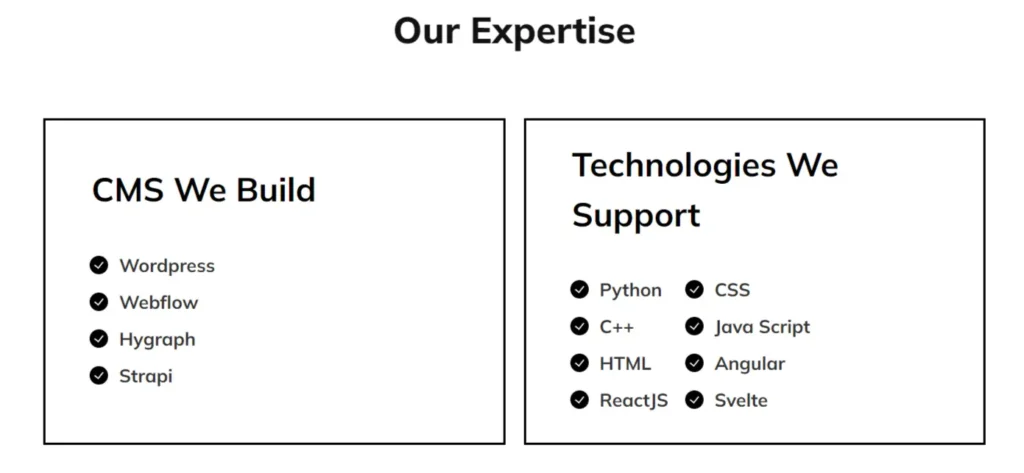
growth.cx will be your strategic partners, helping you set up Webflow’s potential to its fullest. Whether you need a new website or want to migrate to Webflow, we’ve got you covered.
Conclusion
In summary, both Webflow and WordPress have their strengths and cater to different needs. Webflow is often favored by developers for its ease of use and ability to create highly customized, visually stunning designs with minimal effort. On the other hand, WordPress stands out for its extensive features, plugins, and flexibility, making it a versatile choice for various types of websites.
If you need expert assistance in creating a Webflow website tailored to your business goals, consider reaching out to a certified SaaS website design agency. They’ll ensure your vision is brought to life with precision and professionalism.


